If you could only have one gun, which one would it be?
(I’ll pause and let you think about your answer…)
…
…
…
It makes for a compelling mental exercise if you ask yourself what you would carry if you truly needed it in a given scenario.
I’ll show you what I’d do. And what I’d suggest any of my friends and family do, too. Let’s get started…
First, you consider a survival scenario. You won’t always be able to hunker down in your well-equipped survival retreat with your vault full of guns and your stockpile of ammunition.
“Survival” implies a certain flexibility.
You may be at home, with the hatches battened down, sure, especially if the problem causing an emergency is civil unrest or a temporary power outage.
But what if you’re called on to use your survival skills because a wildfire is forcing an evacuation? What if a flood or some other natural disaster is bearing down on you? What if your government mandates an evacuation for one of any number of reasons, and all you can have with you in terms of supplies and equipment is what you can carry?
Realistically, you’re going to be able to carry a long gun, maybe two if you’re feeling youthful. More than that just isn’t going to work out unless you want to struggle to move and wear yourself out quickly.
You may think you can “cheat” these limitations by carrying a handgun or some sort of short-barreled weapon, such as a handgun fitted into a personal defense weapon stock (essentially producing a short-barreled rifle or even a semi-automatic “submachinegun” envelope).
The problem is that “survival” firearms needs aren’t usually “combat” firearms needs…
Combat takes place at relatively short ranges, especially in urban environments.
That is where any sort of short-barreled weapon shines.
But “survival,” especially survival in any sort of long-term capacity, implies longer distances. You may need to hunt game; you may need to fend off hostile parties from a distance.
“Survival” also implies you’ll be alone or working with a small group of fellow survivors. You’ll be outnumbered by the myriad hostiles you could face, from government forces to looters to rioters and other citizens who want what you could be carrying.
What all this adds up to is that, yes, you may well be carrying a pistol or personal defense weapon, but that’s your fighting and self-defense tool, not your survival weapon.
Your survival weapon is a long-range tool, a means to reach out and get someone or keep someone off you.
Survival weapons can also be used for long-range destruction of personal property.
You may be wondering how this is a “survival” function at all, but it may be the case that you need to make it more difficult for people to track you or for authorities to intercept in you a full-blown, collapse-of-law-and-order emergency. In that case, your survival weapon can be used to strike everything from cameras (a particularly pesky issue these highly monitored days) to electrical transformers and a variety of other equipment.
So now that you know you should be carrying a long gun, what’s the best long gun to have?
(Again, I’ll pause for your answer…)
…
…
…
Now, you might choose to go with a shotgun as your general-purpose survival weapon. The shotgun has a lot to recommend it…
A good pump-shotgun is very simple and readily available. In a time when there are more and more unconstitutional gun laws hemming in your ability to purchase and own a firearm, pump shotguns offer decent firepower that is usually quite legal (given the pump shotguns traditional standing as a hunting weapon, one of the few firearms the political left will still grudgingly allow you).
A typical pump gun holds five rounds or so, which is more than enough firepower for limited engagements.
At relatively close ranges, the shotgun has great knockdown power. A variety of loads are available for it, including “specialty” rounds that let you tailor what the weapon is supposed to do (such as busting door locks).
Realistically, though, there are only two loads you should be considering in a twelve-gauge pump gun…
The first is double-aught (00) buck shot, which is basically nine metal pellets (each of them about the size of a nine-millimeter bullet without the cartridge case).
The second is deer slugs, which are just a single heavy projectile. If you’ve ever shot a deer slug through plywood, you know it makes a hole about the size of a quarter.
At closer ranges the fearsome power of either load should be obvious. (Every other load is a waste of your time; bird shot and other lighter shot don’t penetrate deeply enough for self-defense use, which is why the fellow Vice President Dick Cheney accidentally shot in the face didn’t actually die from getting hit.)
This is why the twelve-gauge shotgun is so well-regarded as a home-defense weapon. It puts immense power and moderate range in an affordable, legal, durable, and reliable package that almost anyone can own.
But here’s the thing…
As the distances get longer, the shotgun looks less desirable as a survival weapon.
The farther the distances get, the more 00 buck shot will spread. This means that if you’re shooting at a target that is near anything (or anyone) you DON’T want to shoot, you have no real idea where the pellets are going to go. Even if you have taken the time to gauge different shooting distances and work out the spread zones for each, this is still just a guess.
You can compensate for this problem by loading only slugs, or carrying slugs with the weapon (such as on a sidesaddle or in a bandolier sling) and loading them for when you anticipate needing them.
But this brings us to the other problem of shotguns…
They are very loud, and if you are using your weapon to destroy equipment in order to foul pursuit by enemy forces or compromised authorities, your long-term-survival or “bug out” situation could quickly become an active pursuit. The same is true if you are using your survival weapon to hunt game. The boom of a shotgun will give away your position for a long way around.
Before ammunition shortages and skyrocketing prices made the lowly .22 Long Rifle hard to find, it was the easiest thing in the world to recommend a .22 Long Rifle weapon for all-around survival.
Provided you take care to stockpile ammunition, this is still the case.
A good .22 can handle all the basic utility, hunting, and even equipment destruction needs you might have while surviving, evading pursuit, foraging in hostile territory or non-permissive environments, and even fighting off enemies. While not the most powerful defensive round by a long shot, the .22 LR still takes more lives on an annual basis (or it did, domestically) than any other round simply because it is (or was) so common.
A .22 enables you to carry a lot of ammunition in a relatively small space with low weight requirements. It has long range, is relatively quiet (and can be made more quiet with subsonic ammunition and improvised silencers), and can be very accurate, which is desirable in a survival long arm.
You want to hit what you’re aiming at and nothing else, and you want to be able to do this without drawing too much unwanted attention.
A good all-around semi-automatic choice for a .22 survival rifle, which does everything we’ve described and more, is the Ruger 10/22.
These are common, accurate, and very well made. Models on the market now include a take-down version that breaks in two for easy storage and transport. Equipped with a scope, the Ruger 10/22 is capable or excellent accuracy, which makes it ideal for small game, but also gives you ten quick shots with which to take down an adversary.
With factory rotary magazines, it is quite reliable. A five-round magazine is available for those states that have draconian magazine limits, too.
Finally, if you have made the decision to carry a .22 Long Rifle survival weapon, there is one more weapon you might choose: The Henry .22 Lever Action.
This rifle has a tubular magazine that holds a great many .22 rounds, but that it is not the weapon’s primary advantage. What makes the Henry a great choice is that it can fire .22 Short, .22 Long, and .22 Long Rifle.
That means that even in times of ammunition scarcity, you can find some sort of .22 ammo that will fire in your gun. .22 Short is also a great caliber for taking small game and shooting practice rounds while making very little noise.
Finally, in a survival weapon, you could choose to upgrade to what is considered by some to be a glorified “varmint gun” anyway — the AR15 platform.
The 5.56mm / .223 round this weapon fires (and please be careful when selecting ammunition, because the two are not necessarily interchangeable depending on the weapon) does everything that the .22 Long Rifle does, but with longer reach and greater power. This makes it a better compromise if you’re worried about engaging hostile forces or taking heavier game than the .22 Long Rifle can reliably kill.
The tradeoff for stepping up to a .223 from the .22 LR in a survival weapon is noise and ammunition capacity. You can’t carry as much ammo with you for the AR as you can for the .22 LR. The weapon is also louder, raising your profile in a survival setting.
Regardless of the platform you choose, always keep in mind your intended purpose…
Your survival gun and your combat gun aren’t necessarily the same thing. Choose your weapon accordingly.


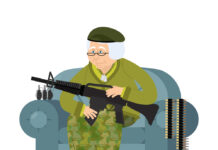


![Put A 1911 In Your Pocket? [Video]](/wp-content/uploads/2024/04/Screenshot-2024-04-16-6.06.49-PM-218x150.png)




![[Checklist] What Gear You Need To Take Pistol, Rifle & Shotgun Training Courses [Video]](/wp-content/uploads/2023/07/Depositphotos_275087632_L-218x150.jpg)


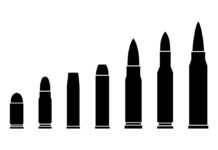
![Immigrant BLOWS UP Liberal Gun Narrative In 35 Seconds [Video]](/wp-content/uploads/2024/01/Depositphotos_354969444_S-218x150.jpg)
![What You Must Think About BEFORE Pulling The Trigger [Video]](/wp-content/uploads/2023/12/Depositphotos_28460095_S-218x150.jpg)
![Is The LARGEST Sporting Rifle In The World What Joy Behar Was REALLY Talking About? [Video]](/wp-content/uploads/2024/04/Depositphotos_417599848_S-218x150.jpg)
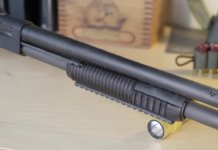
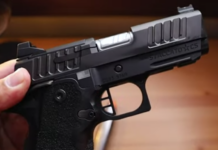
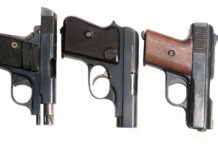
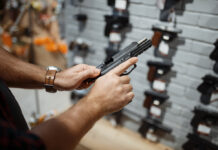
![Optic Ready vs Milled slides? [Video]](/wp-content/uploads/2024/02/image-3-218x150.png)
![What is in Carter’s 2023 EDC? [Video]](/wp-content/uploads/2023/07/Depositphotos_146856137_L-218x150.jpg)





![Put A 1911 In Your Pocket? [Video]](/wp-content/uploads/2024/04/Screenshot-2024-04-16-6.06.49-PM-100x70.png)
![Is The LARGEST Sporting Rifle In The World What Joy Behar Was REALLY Talking About? [Video]](/wp-content/uploads/2024/04/Depositphotos_417599848_S-100x70.jpg)



![Optic Ready vs Milled slides? [Video]](/wp-content/uploads/2024/02/image-3-100x70.png)
![[Checklist] What Gear You Need To Take Pistol, Rifle & Shotgun Training Courses [Video]](/wp-content/uploads/2023/07/Depositphotos_275087632_L-100x70.jpg)
![What is in Carter’s 2023 EDC? [Video]](/wp-content/uploads/2023/07/Depositphotos_146856137_L-100x70.jpg)


